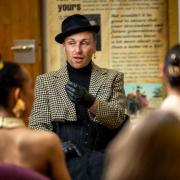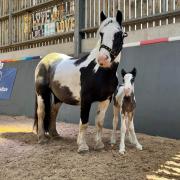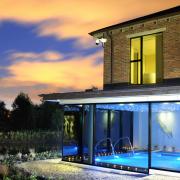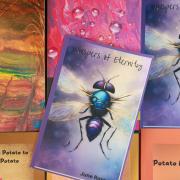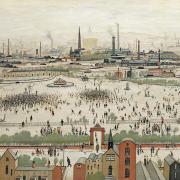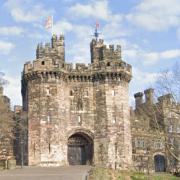A new exhibition in Lancaster explores the global impact of one of the city’s most famous firms
A new permanent gallery at the Judge’s Lodgings Museum focuses on the local, regional, national and international aspects of the world-renowned furniture maker, Gillows of Lancaster and London.
Curated by museum manager, Lynda Jackson, the new the ‘Gillows of Lancaster – A Global Story’ exhibition aims to get behind the story of one of the most important furniture makers in British history over three centuries, from 1728 to the late 20th century. As well as celebrating the artistry and innovation the company is famed for, the exhibition seeks to uncover the human stories associated with it – including founders, partners, employees, enslaved Africans, clients and customers.
Lynda says: ‘The new gallery contains historic features that have never before been on public display. The history of Gillows’ artisan craftsmanship and trade with the world is a fascinating part of the history and economy of Lancaster and this exhibition is a key piece of the jigsaw.’

Founded in about 1730 by Robert Gillow from Great Singleton, Gillows of Lancaster and London was probably the most important British furniture maker of its time. Throughout the near 200-year period of the family business before it merged with the Liverpool firm of Warings in 1898, Gillows were renowned for producing some of the best quality furniture in the land. From the very start of the business – which helpfully coincided with the withdrawal of import tax on hardwoods and crucially mahogany – Gillows was constantly developing and innovating to produce some of the most iconic designs in furniture history.
Lancaster-based expert, Susan E Stuart, has researched and written the seminal work on Gillows, produced as two beautifully illustrated volumes for the Antique Collectors Club. In her preface she writes: ‘It is hard to overstate the importance of the Gillow material to the history of both British and North American furniture …. Gillows was a unique firm.’
Having a showroom and workshop in central London and a manufacturing base elsewhere, she points out, enabled them to make top quality, fashionable furniture less expensively than their competitors – a key ingredient to their success.
The prolific but carefully overseen and quality-controlled production of furniture extended to dining tables and chairs (which can today be seen in many of the country’s leading country houses), bookcases and wardrobes, four poster beds, occasional tables and sideboards, clothes presses, drawer furniture and cupboards, picture frames, clock cases and mirrors and glass.

The firm also made a wide range of ‘miscellaneous’ furniture often specially commissioned to a customer’s outline design and specification with the inclusion of ‘ingenious devices’ and the firm was very quick to take advantage of the advent of the billiard table as a ‘must have’ for the country house. The booming trade with the West Indies and Lancaster’s position as a thriving port meant that their furniture was soon exported all over the world.
Little expense was spared in making the furniture, with beautiful satinwood veneers, intricate inlay work and the use of many extremely rare and exotic woods including Amboyna, Botany Bay Wood, Ebonies, Tulip Wood, Vinhatico, Violet Wood and Zebra Wood among many others.
But this would have been worth nothing if Gillows had not had the skilled craftsmen to make the furniture and, between 1731 and 1850, Susan Stuart estimates they employed some 137 apprentices. As well as providing the best possible training, the company also had a very forward-looking attitude for the time, educating the family’s daughters and allowing them to be involved in the business.
As contemporaries of Chippendale cabinetmakers, Gillows grew as a regional maker during the height of English furniture design before receiving the Royal Warrant to Queen Victoria and the new exhibition – a £30,000 project supported by the Regional Furniture Society and Art Fund – explores its trade with the West Indies, North America, Europe and beyond. Some highlights on display include the Lady’s Workbox, Lady’s Worktable, Worswick clock, Richard Gillow’s personal book collection and Gillows first trade card.
As Susan E Stuart writes: ‘Gillows mostly designed furniture especially for their customers, but what most people don’t know is that they also copied designs from engraved plates from contemporary design books such as Thomas Chippendale’s ‘Director’. They wrote in 1765: ‘if any of Chippendale’s designs be more agreeable I have his book and can execute ‘em & adapt them to places they are for if you’ll be so obliging to point out the (Plate) number.’
An example of this is a desk in the museum ordered by Sir James Ibbetson of Denton Hall, Yorkshire, in 1778, copied almost entirely from a Chippendale Plate. Like many customers, Sir James wanted alterations to his ‘large and handsome library table’, but he had to be reminded to pay, then haggled over the final price.
* The Judges’ Lodgings Museum is open from 10am-4pm Thursday, Friday, Saturday and Sunday until November 5 this year. It is a Grade One listed building, built by Thomas Covell in 1625 and is today managed by an expert team from Lancashire County Council. As well as the largest publicly accessible exhibition of Gillows furniture in the world, there are lovely period rooms to explore and it also houses the Museum of Childhood. For entry prices and accessibility information, go to lancashire.gov.uk/leisure-and-culture/museums/judges-lodgings












